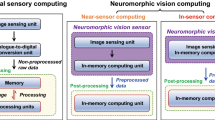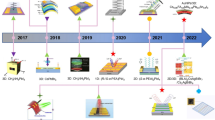Abstract
Most of optical signals is collected using optical instruments. Although photodiodes have the same unilateral conductivity as ordinary diodes, it can act as a photoelectric sensor in circuit and play a significant role in signal acquisition. In this study, the photosensitivity of photodiode was studied, a circuit was designed selecting photodiode as photoelectric sensor, and the signal acquisition was realized by testing the feasibility of the designed circuit. The equivalent model of the designed circuit was established by Pspice software, and the circuit performance under different illumination and bias voltage was simulated and analyzed. It is concluded that the photodiode circuit designed in this paper could effectively reflect the intensity of optical signals. When the optical signal was fixed, the increase of the reverse bias voltage in a certain range increased the photocurrent in the circuit; as a result, the signal was enhanced. The reverse bias voltage should not exceed 90 V; otherwise the dark current in the circuit would interfere with the detection of optical signals. The designed circuit can collect the pulse optical signal effectively and adjust the response characteristics of the circuit through the reverse bias voltage; the higher the bias voltage in a certain range, the better the response characteristics.







Similar content being viewed by others
REFERENCES
Nakajima, F., Nada, M., and Yoshimatsu, T., High-speed avalanche photodiode for 100-Gbit/s ethernet, 2015 Opt. Fiber Commun. Conf. Exhib., Los Angeles, CA, 2015, pp. 1–3.
Patra, P., Yadav, K., Vamsi, N., and Dutta, A., A 343nW biomedical signal acquisition system powered by energy efficient (62.8%) power aware RF energy harvesting circuit, IEEE Int. Symp. Circuits Syst., Montreal, QC, 2016, pp. 1522–1525.
Yang, L. and Chen, T. A compact signal generation and acquisition circuit for electrochemical impedance spectroscopy, Biomed. Circuits Syst. Conf., Shanghai, 2017, pp. 260–263.
Liu, R. and Liu, R., Signal acquisition technology for photoelectric encoder based on FPGA, Optik, 2016, vol. 127, no. 20, pp. 9891–9895.
Baranec, C., Atkinson, D., Riddle, R., Hall, D., Jaconson S, Law, N.M., and Chun, M. High-speed imaging and wavefront sensing with an infrared avalanche photodiode array, Astrophys. J., 2015, vol. 809, no. 1.
Rrg, S., Santos, D.R., Pinto, I.F., Azevedo, A.M., Aires-Barros, M.R., Chu, V., and Conde, J.P., Multiplexed microfluidic fluorescence immunoassay with photodiode array signal acquisition for sub-minute and point-of-need detection of mycotoxins, Lab Chip, 2018, vol. 18, no. 11, pp. 1569–1580.
Ramuz, M., Leuenberger, D., and Bürgi, L., Optical biosensors based on integrated polymer light source and polymer photodiode, J. Polym. Sci. Part B Polym. Phys., 2015, vol. 49, pp. 80–87.
Kano, H., Voort, H.T.M.V.D., Schrader, M., Kempen, G.M.P.V., and Hell, S.W., Avalanche photodiode detection with object scanning and image restoration provides 2–4 fold resolution increase in two-photon fluorescence microscopy, Bioimaging, 2015, vol. 4, no. 3, pp. 187–197.
Xie, S., Zhou, X., Zhang, S., Thomson, D.J., Chen, X., Reed, G.T., Ng, J.S., and Tan, C.H., InGaAs/AlGaAsSb avalanche photodiode with high gain-bandwidth product, Opt. Exp., 2016, vol. 24, no. 21, p. 24242.
Selman, A. M. and Hassan, Z., Highly sensitive fast-response UV photodiode fabricated from rutile TiO2, nanorod array on silicon substrate, Sens. Actuators A Phys., 2015, vol. 221, pp. 15–21.
Luongo, G., Giubileo, F., Genovese, L., Iemmo, L., Martucciello, N., and Di Bartolomeo, A., I-V and C-V characterization of a high-responsivity graphene/silicon photodiode with embedded MOS capacitor, Nanomaterials, 2017, vol. 7, p. 158.
Wang, Y., Shao, L., Hu, W., and Wu, Y., Simulation and experiment of the nonlinear response of the InGaAs p-i-n photodiode under high illumination, Proc. SPIE, 2016, vol. 10155. https://doi.org/10.1117/12.2247047
Ogasawara, K., Allegrini, F., Desai, M. I., Livi, S., and Mccomas, D. J., A linear mode avalanche photodiode for ion detection in the energy range 5–250 keV, IEEE Trans. Nucl. Sci., 2015, vol. 59, pp. 2601–2607.
Rymanov, V., Khani, B., Dülme, S., Steeg, M., and Stöhr, A., Compact triple transit region photodiode module with WR-12 rectangular waveguide output, Int. Top. Meet. Microwave Photonics, 2015, pp. 1–4.
Cao, C., Shen, B., Zhang, B., Wu, L., and Wang, J., An improved model for the full well capacity in pinned photodiode CMOS image sensors, IEEE J. Electron Devices Soc., 2015, vol. 3, pp. 306–310.
Author information
Authors and Affiliations
Corresponding author
About this article
Cite this article
Yubo Li, Zhen Pan Design of Photodiode Circuit Based on Signal Acquisition. Opt. Mem. Neural Networks 28, 50–57 (2019). https://doi.org/10.3103/S1060992X19010077
Received:
Revised:
Accepted:
Published:
Issue Date:
DOI: https://doi.org/10.3103/S1060992X19010077




